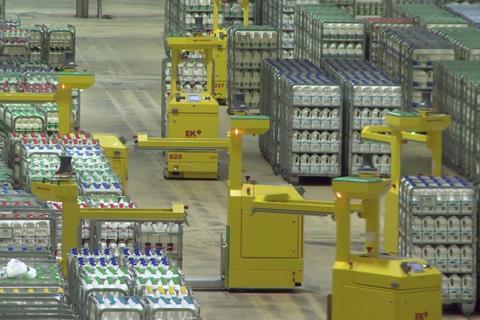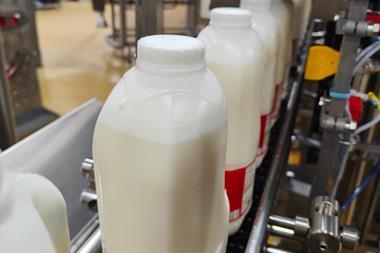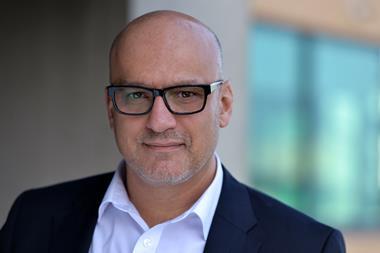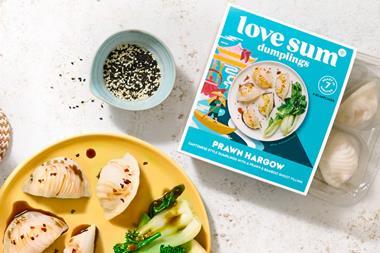
Arla Foods has warned of tough trading conditions to come in 2023, following a hit to its margins and falling sales of its branded products.
The dairy co-op’s latest results pointed to the “extreme volatility” across the food industry in 2022, during which the cost of producing milk hit “unprecedented levels”.
Against that backdrop, revenues at Arla’s UK business climbed 17.5% to £2.6 billion last year, revealed accounts published on Thursday.
This fed into a 23.2% increase in total Arla group revenues to €13.8bn, compared to €11.2bn in 2021.
The revenue rise was driven by “necessary” retail price increases to allow the supplier to increase its farmgate price, the Lurpak and Cravendale owner said.
However, soaring inflation impacted its branded portfolio, which – after solid growth in recent years – saw volumes slump by 7%.
In the face of soaring costs, net profit allocated to its farmer owners stood at €382m in 2022, or 2.8% of revenue. Arla said this was at “the bottom end” of its net profit share target range of 2.8%-3.2%, and down from 3% in 2021.
The dairy giant said its performance was coloured by the unprecedented cost of commodity products, which, together with high production costs “put retail and foodservice margins under pressure”.
“Inflationary pressure and uncertainty for us and our farmer owners continued to dominate, as we saw the cost of producing milk soar to levels we have never seen before,” said Arla UK MD Ash Amirahmadi.
“For us, balancing increased returns to our farmer owners to enable them to keep producing milk, whilst ensuring our products remain accessible and affordable for shoppers, was a key priority that we had to face to into.”
Cheese prices up to 50% more expensive in just two months
And there was “no doubt that 2023 will continue to present volatile economic conditions and we will continue to navigate these conditions with the best interests of our farmers and our shoppers at the heart”, Amirahmadi warned.
“Producing natural, nutritious, accessible & sustainable dairy is the DNA of Arla, and following the introduction of our new sustainability incentive model last year, we will continue our focus on supporting our farmers with their transition to sustainable dairy, whilst providing consumers the very best dairy products that are made in the best possible way.”
After that incentive model comes into effect in August, farmers will be able to earn up to 3 eurocents per kg of milk for their actions in contributing to Arla’s 2030 target of reducing scope 3 CO₂e emissions by 30%/kg of milk and whey, as well as other sustainability actions such as enhancing biodiversity.
Elsewhere, positive momentum continued in Arla’s Foodservice division, Arla Pro, which saw sales grow by 17%. The “strong growth” was driven by channel and category expansion, as the market continued to recover from post-Covid restrictions, it said.
Arla’s average milk price increased by 40.5%, from 37.0 eurocents per kg in 2021 to 52.0 eurocents per kg in 2022. Its performance price, which measures the value Arla adds to each kilo of its owners’ milk, was 55.1 eurocents per kg, a 38.8% increase compared to 2021.
Looking to the current financial year, Arla’s group CEO Peder Tuborgh said 2023 would “undoubtedly be another difficult year, with the challenging economic environment globally and the ongoing effects of the war in Ukraine continuing to impact the energy market and supply chains”.
He added: “We are currently seeing some easing of cost pressure on farmers, and as a result we expect the supply and demand balance to be restored on the dairy market over the course of 2023. Commodity prices, however, began a sharp decline during the fourth quarter of 2022, and we expect further decrease on the commodity markets in 2023. We also expect to see a continued slow-down in branded growth due to reduced buying power of consumers and fear of recession.”
Arla expects its branded volumes to decline by up to 3.5% in 2023 due to the impact of the cost of living crisis. It expects to start growing its volumes again from 2024 in the range of 1% to 4%.



















No comments yet